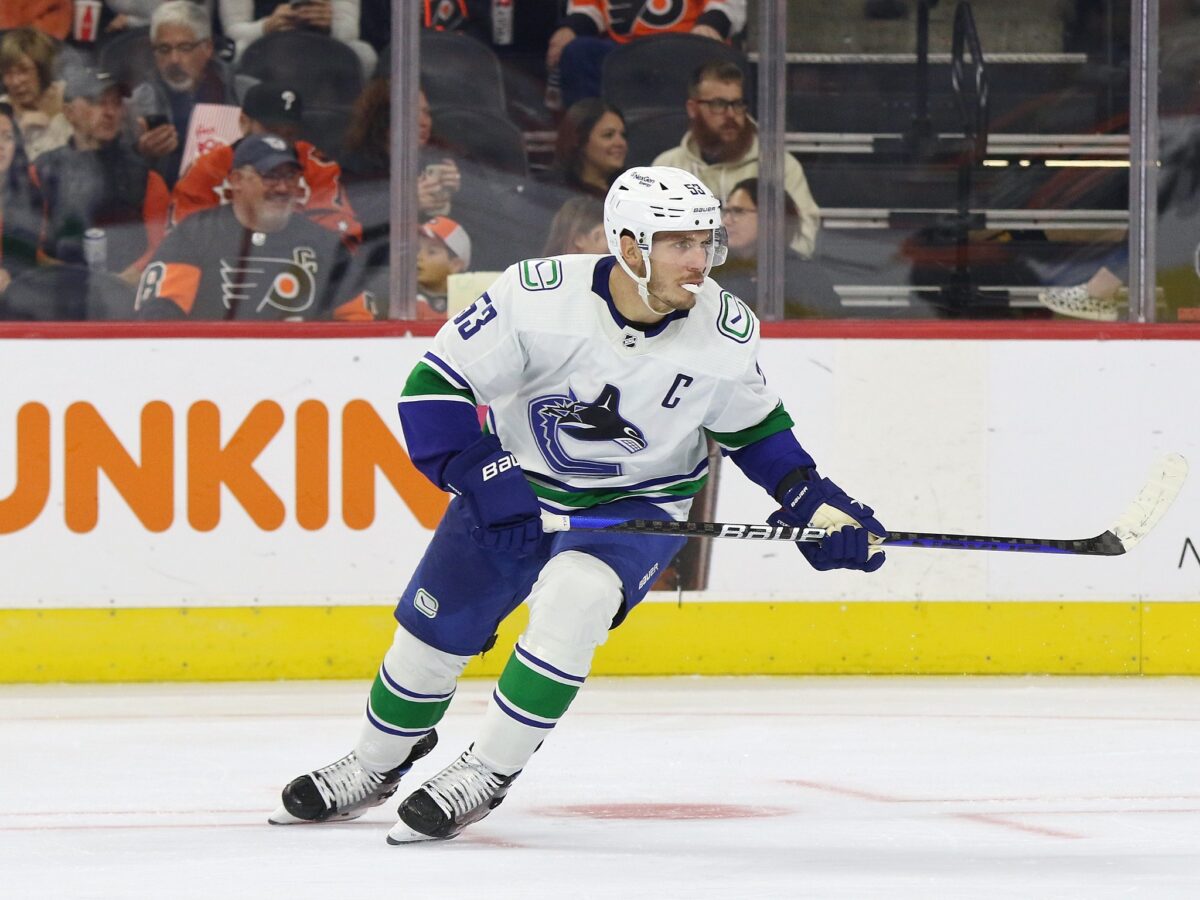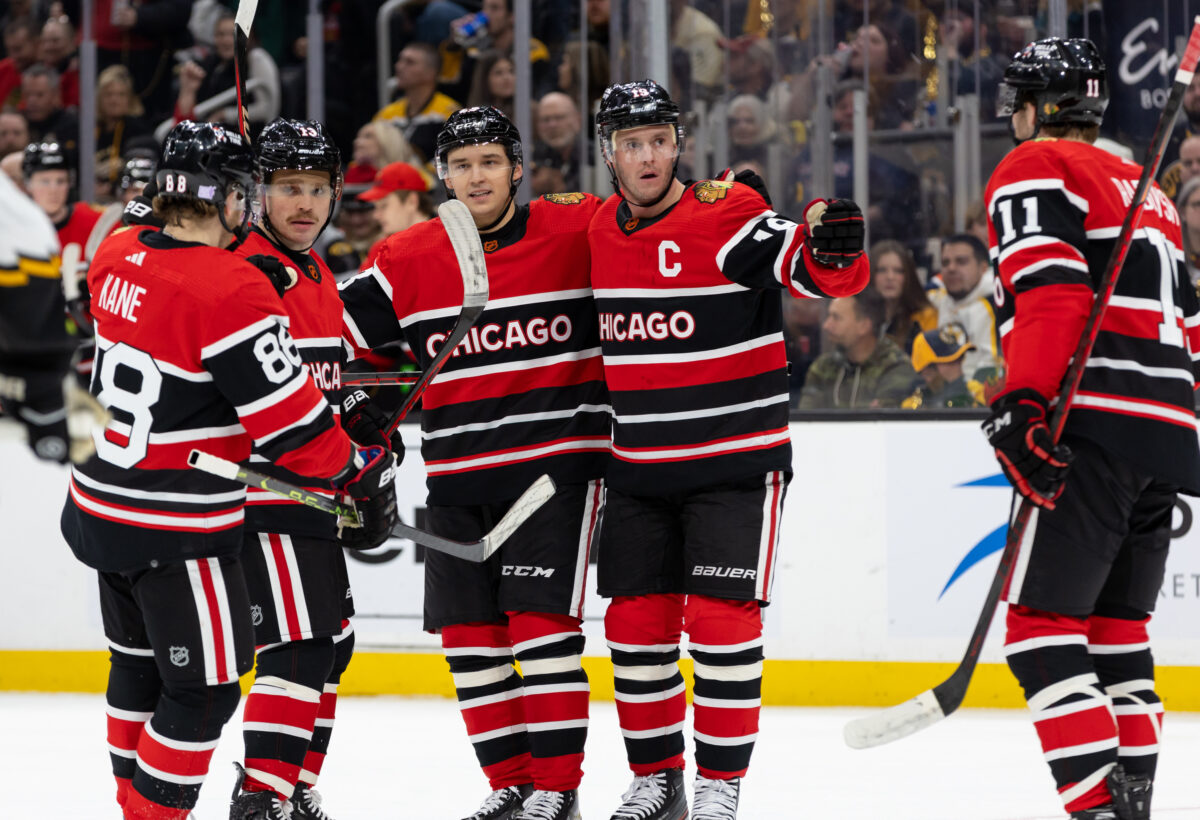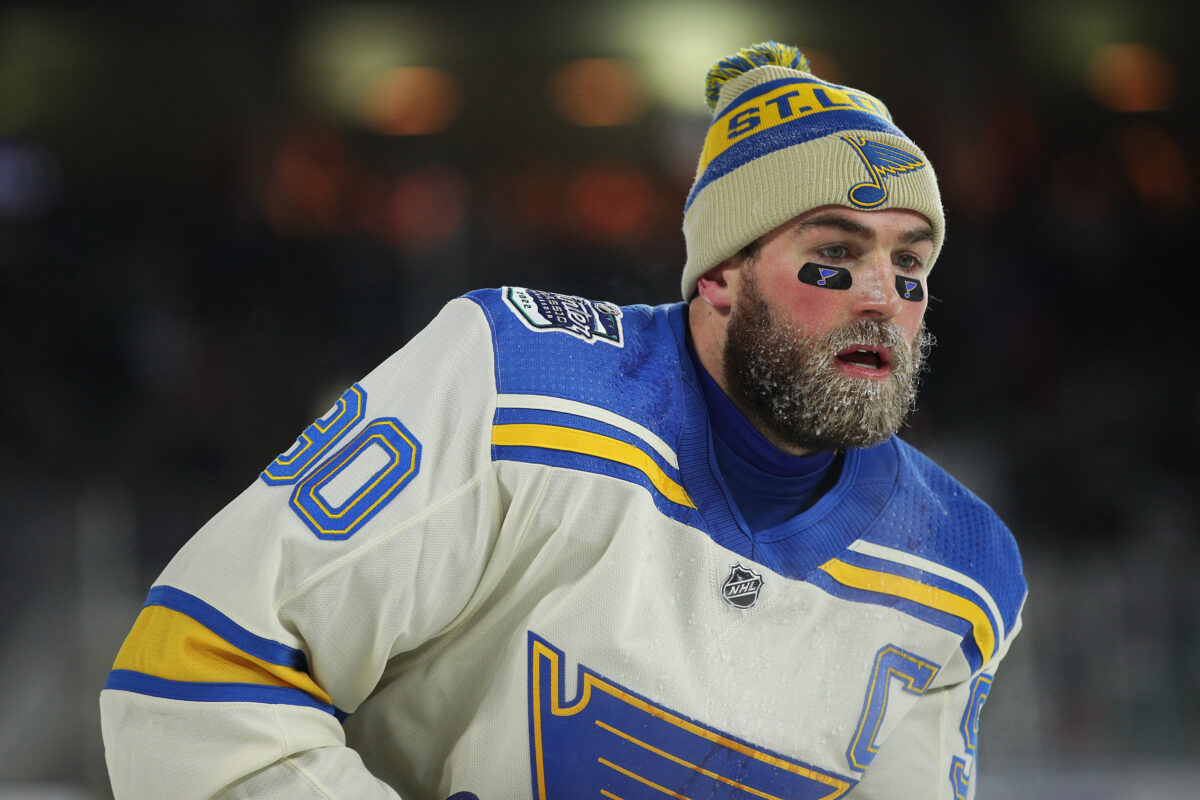There’s no sugarcoating it. The Colorado Avalanche are enjoying a less-than-ideal start to the 2022-23 season. They do own a record of 18-11-2 and sit in the first Western Conference wildcard slot, but it’s a far cry from their record-setting performance in 2021-22. Although an awful run of injuries to key players hasn’t helped, the team experienced an offseason exodus that saw the likes of Nazem Kadri and Andre Burakovsky cash in on strong playoff showings and deplete Colorado’s scoring depth as a result.
In particular, Kadri’s absence has been felt the most, as the Avalanche have seen a carousel of candidates take a spin in the second-line center position to varying levels of success. Even though hockey has become increasingly positionless in recent years and accounting for the eventual return to full health, the uncertainty of who will occupy that spot looms large.
If the Avalanche intend to make a splash in the trade market, they must consider the potential cap constraints such a move may introduce this season and in the future. While only including players considered as locks for the final roster, the Avalanche have already committed $68 million to only 12 players in 2023-24, including Nathan MacKinnon’s mammoth contract extension. It gives them little leeway to slot in reinforcements via trade while still having to fit in extensions for pending restricted free agents (RFAs) in Alex Newhook and Bowen Byram, among others.
Related: The Avalanche’s Slow Start to 2022-23, By the Numbers
For that reason, the Avalanche’s executive group may exclusively look to players on deals that expire this summer and fill out the rest of the lineup with bargain-bin options and young players still on their entry-level contracts (ELCs). Also, any trades may not occur until closer to the trade deadline when the cap-strapped Avalanche would have accrued more cap space and seen how the roster operates at full strength, so consider this a preview of what’s to come.
To avoid mentioning it for each entry on this list, a player’s cap hit can be 50 percent retained twice before reaching his intended destination, so accommodating larger salaries are not that significant of a barrier. The Avalanche possess their first-round picks for the next three drafts and have a few interesting prospects in a relatively weaker farm system, and although very unlikely, could dangle one of Byram or Newhook in a major trade. Those pieces may not be the most enticing available on the market, but the ingredients for bigger deals are there if necessary.
Keeping that context in mind, here are three major trade targets for the Avalanche as they look towards the spring when they will try to defend their Stanley Cup title.
Bo Horvat, Vancouver Canucks
Let’s get started with Bo Horvat, one of the biggest names to hit the trade market and the current captain of the floundering Vancouver Canucks. Recent reports suggested that Horvat’s time in Vancouver is up and that the organization is scouring what should be a bevy of trade offers for the 27-year-old pivot after rejecting another contract offer.
On one hand, those developments are surprising. The Canucks have several enviable core pieces in Elias Pettersson and Quinn Hughes and should eventually blossom into Stanley Cup contenders as their stars consolidate their standing among the NHL’s elite at their position. On the other, the stories surrounding the organization’s roster mismanagement are legendary, and by the time the team gets to the level of contenders, Horvat is likely to have aged out of his prime. It’s a difficult situation to be in for a player with 23 playoff games on his resumé, so it’s tough to blame him for seeking greener pastures.

Look past the Canucks’ middling 14-15-2 record and underwhelming performances from key players such as J.T. Miller and Thatcher Demko, and you can see tremendous output from Horvat down the middle. He’s scored 22 goals and 31 points in 32 games this season, both representing career highs for the nine-year veteran. Horvat’s individual (21.8% SH%) and on-ice shooting percentage (OiSH%) are high (9.21% at 5-on-5 is the second-highest of his career), but his individual shot- and chance-generation rates are also among the best of his career, suggesting he can maintain a semblance of his blistering pace.
Analytical research has downplayed the importance of faceoffs, but Horvat’s 57.6 percent win rate is the highest of his NHL tenure, and adding him would bolster one of the Avalanche’s biggest weaknesses (29th overall at 45.9 percent). Horvat also eats up minutes in all situations, ranking second on the Canucks in average ice time and first among forwards in average shorthanded usage. As a result, he takes on the most difficult matchups and plays the 25th highest ratio of his minutes against opposing teams’ top three forwards, according to Evolving Hockey’s quality of competition tool.
Of course, Horvat requires a new deal beyond this season, and betting on prime-age players in a contract year is always risky business, especially when they could demand a return that teams may be fearful of following through. It’s also a gamble to lock in players in the midst of a shooting bender when it’s unclear that they can maintain that pace over the long term. Still, Horvat could occupy the second-line role and play at a high level for the next five years and give the Avalanche as good of a chance as any to win one or more Stanley Cups in that time. Of the centers on the trade block this season, he’s the safest bet in that regard.
Jonathan Toews, Chicago Blackhawks
The second trade candidate, and one whose name has surfaced in trade rumours since last season, is Jonathan Toews, the 34-year-old captain of the now-rebuilding Chicago Blackhawks. The three-time Stanley Cup champion has repeatedly voiced his displeasure with the direction taken by the new Blackhwaks’ regime, and his no-move clause (NMC) allows him to dictate his future if he so chooses. As they’re firmly entrenched in last place in the NHL, and with Connor Bedard or Adam Fantilli being two of the most tantalizing players of the vaunted 2023 draft class, all the incentive is there for the team to part ways with one of their most attractive assets.

However, for all of his accolades, Toews’ on-ice decline is evident. His all-situations ice time over the past two seasons is the lowest of his career, and his underlying numbers at 5-on-5 show a distinct drop in even-strength production and chance generation. An incendiary 17.5 percent SH% has masked some of the decline, but there’s no denying the impact of age-related deterioration as he’s produced the fewest goals, assists, points, and shots per 60 at 5-on-5 of his 15-year career.
Toews is winning faceoffs at the highest clip of his career (65 percent) and has seen secondary usage on Chicago’s penalty kill, but whether that’s enough to warrant giving up the assets he could command from intangible-hungry executives is the sticking point. Toews also hasn’t posted a shot- or expected goals share of 50 percent or higher at 5-on-5 since 2017-18. Some of that is due to a diminished supporting cast and reduced motivation as a result of the current rebuild, but his relative on-ice impact (the difference between when he is on the ice compared to off) has been negative in two of those four seasons.
You may also like:
- Colorado Avalanche Won’t Be Contenders This Season
- Colorado Avalanche Lineup Projection for 2024-25
- Avalanche Giving Nikolai Kovalenko a Chance to Prove Himself
- 3 Avalanche Players With the Most to Prove in 2024-25
- Peter “Foppa” Forsberg: A Biography
Toews’ resumé is clear: he is a near point-per-game player with over 137 postseason appearances, which includes multiple titles at both the NHL and international levels, as well as a period of time in which he was considered, at worst, one of the three best two-way players behind Sidney Crosby and Patrice Bergeron. He is no longer that calibre of player, but the instincts remain, and it’s likely a move to a legitimate Cup contender could rejuvenate him to some degree.
Of course, Toews’ involvement in the Kyle Beach scandal represents an unfortunate lining to what has otherwise been an illustrious career. Avalanche management and the dressing room figureheads must collectively decide if the investment is worth the PR hit. Any potential trade for him involves an intersection of several complicated on- and off-ice dynamics, and navigating such a fraught situation could contribute to how likely the Avalanche are to pursue a deal.
Ryan O’Reilly, St. Louis Blues
Given how his tenure with the Avalanche ended, a return to Colorado for Ryan O’Reilly is doubtful, but it’s not impossible. The saying goes that time heals all wounds, and the Avalanche’s management group has been reshuffled since O’Reilly’s tenuous exit. Whether the St. Louis Blues’ veteran center feels at all fondly about his first NHL home is an entirely separate discussion, but the lack of trade protection in his contract removes one of the most significant barriers to a reunion.
Like Toews, a trade for O’Reilly would almost certainly be a short-term solution to the second-line center position. Despite a recent Conn Smythe Trophy performance in the 2019 Stanley Cup Final, the now 31-year-old center is on the precipice of decline, and any long-term deal carries many potential pitfalls. His 15 points in 33 games represent a significant drop in production, and his average 5-on-5 ice time over the past two seasons (13:30 and 13:43) is the lowest since his rookie and sophomore seasons.

O’Reilly is hovering at or just below 50 percent in terms of 5-on-5 shot- and chance-share, but his physical decline could be buffered by being flanked with strong forechecking wingers in Artturi Lehkonen and Valeri Nichushkin. To his credit, O’Reilly remains stellar in the faceoff dot (53.3 percent win rate this season) and is playing almost two minutes per game while shorthanded. Further, his 5-on-5 OiSH% is at its lowest since the 2017-18 season, so some positive regression is in order, but that doesn’t mean that the Avalanche would be the ones to reap those benefits.
Even with his contract expiring this summer, any O’Reilly trade depends on the on-ice fortunes of the Blues. The Central Division club currently owns a 16-16-1 record and the 11th-highest points percentage in the Western Conference and has only won six of their 15 games over the last month of play. If things don’t turn around quickly, Blues general manager Doug Armstrong could be forced to pivot towards a retool, and the Avalanche are positioned to pounce on their misfortune in spite of the intensity of their most recent playoff battles.
It goes without saying, but the Avalanche must do their due diligence on which version of O’Reilly they would get in a hypothetical trade. There is a price to pay for intangibles such as leadership and veteran guile, but those traits should not take precedence over actual on-ice performance, especially when the player’s reputation likely outweighs his true value.
Can the Avalanche Successfully Juggle their Short- and Long-Term Future?
Regardless of which way the Avalanche choose to turn, they will have to decide which they value more in their short- or long-term future. The aforementioned salary cap allocation and gradually dwindling prospect pool are realities faced by every would-be dynasty, but it doesn’t make the decision any easier to make.
It’s not impossible for them to thread the needle and make a move that boosts their Cup odds this season and keeps them at the forefront of the championship conversation, but it is arguably the most treacherous path to take. The most successful franchises of the NHL’s salary cap era, such as the Pittsburgh Penguins and the Tampa Bay Lightning, have, through shrewd roster tradeoffs and clever cap manipulation, maneuvered the evolving landscape.
Avalanche management has collectively shown that they are capable of making difficult decisions to ensure the long-term growth and prosperity of the organization. Successfully navigating the 2023 trade deadline and the 2023 offseason is shaping up to be their most death-defying act yet, but if anyone can do it, it’s the Avalanche.
Data courtesy of Evolving Hockey, MoneyPuck, Natural Stat Trick, and the NHL.
